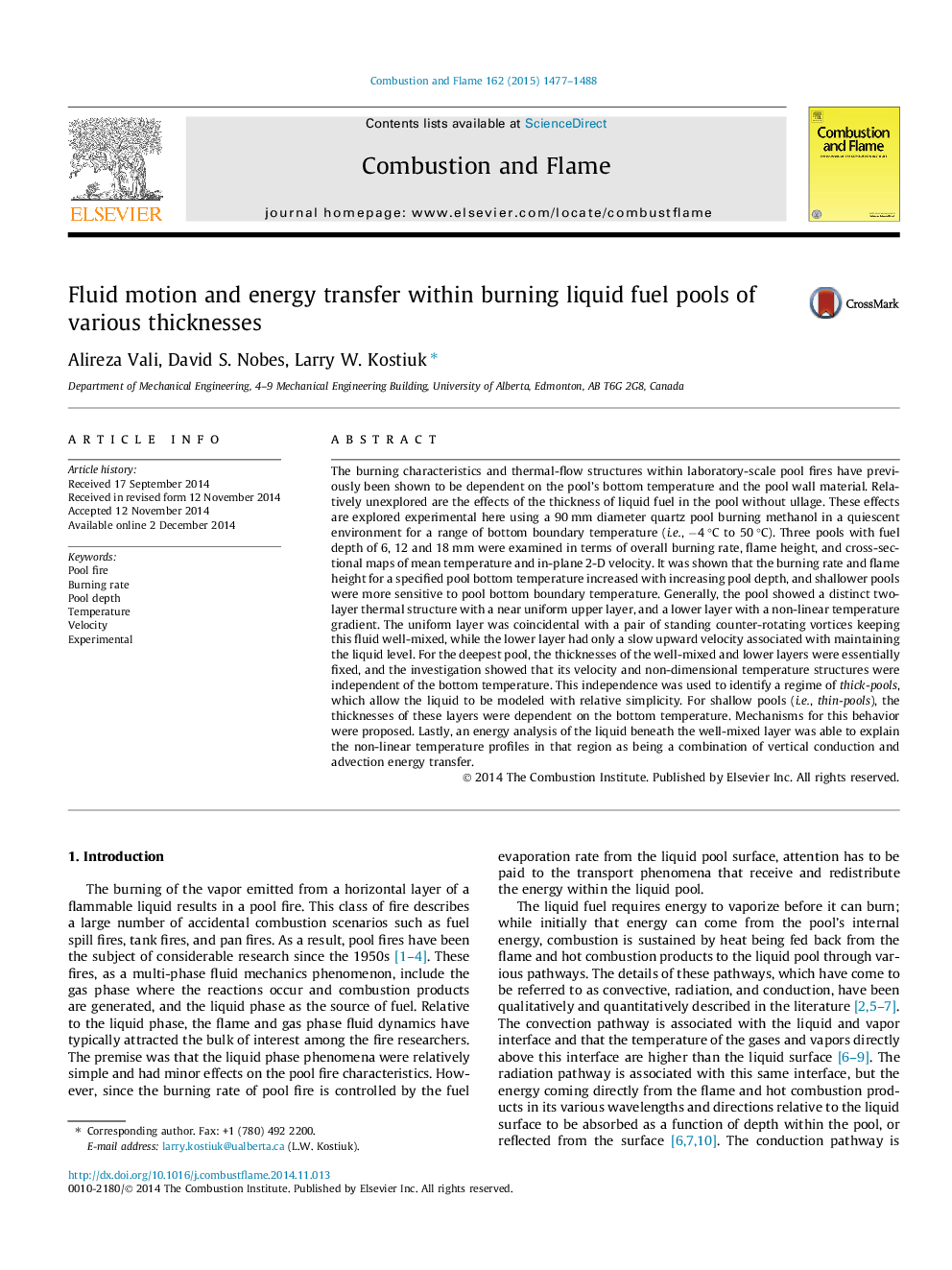| کد مقاله | کد نشریه | سال انتشار | مقاله انگلیسی | نسخه تمام متن |
|---|---|---|---|---|
| 168774 | 457952 | 2015 | 12 صفحه PDF | دانلود رایگان |
The burning characteristics and thermal-flow structures within laboratory-scale pool fires have previously been shown to be dependent on the pool’s bottom temperature and the pool wall material. Relatively unexplored are the effects of the thickness of liquid fuel in the pool without ullage. These effects are explored experimental here using a 90 mm diameter quartz pool burning methanol in a quiescent environment for a range of bottom boundary temperature (i.e., −4 °C to 50 °C). Three pools with fuel depth of 6, 12 and 18 mm were examined in terms of overall burning rate, flame height, and cross-sectional maps of mean temperature and in-plane 2-D velocity. It was shown that the burning rate and flame height for a specified pool bottom temperature increased with increasing pool depth, and shallower pools were more sensitive to pool bottom boundary temperature. Generally, the pool showed a distinct two-layer thermal structure with a near uniform upper layer, and a lower layer with a non-linear temperature gradient. The uniform layer was coincidental with a pair of standing counter-rotating vortices keeping this fluid well-mixed, while the lower layer had only a slow upward velocity associated with maintaining the liquid level. For the deepest pool, the thicknesses of the well-mixed and lower layers were essentially fixed, and the investigation showed that its velocity and non-dimensional temperature structures were independent of the bottom temperature. This independence was used to identify a regime of thick-pools, which allow the liquid to be modeled with relative simplicity. For shallow pools (i.e., thin-pools), the thicknesses of these layers were dependent on the bottom temperature. Mechanisms for this behavior were proposed. Lastly, an energy analysis of the liquid beneath the well-mixed layer was able to explain the non-linear temperature profiles in that region as being a combination of vertical conduction and advection energy transfer.
Journal: Combustion and Flame - Volume 162, Issue 4, April 2015, Pages 1477–1488
